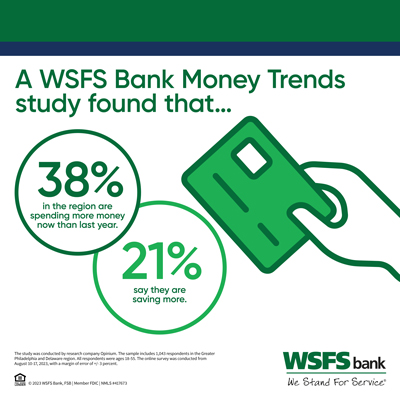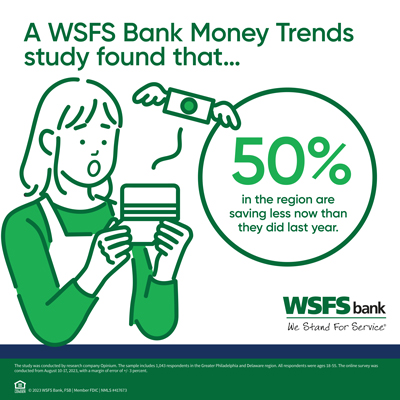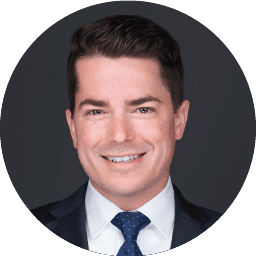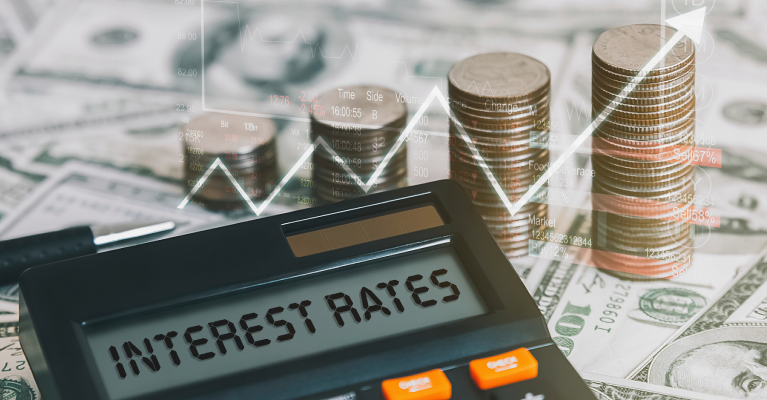 Nearly four in 10 regional residents (38%) are spending more money now compared to last year, while only 21% in the region are saving more, a WSFS Bank Money Trends study found.
Nearly four in 10 regional residents (38%) are spending more money now compared to last year, while only 21% in the region are saving more, a WSFS Bank Money Trends study found.
Continued Economic Headwinds
- Rising costs and inflation topped the list of why consumers are spending more (72%), followed by paying for emergency expenses such as repairs or medical bills (27%), paying off more debt (23%) and rising interest rates on credit cards and loans (23%).
- 60% said they are spending more on groceries, 53% on transportation, 50% on utilities and 43% on housing than last year.
- Some consumers are adjusting as they’ve reduced spending on restaurant visits (42%), entertainment (34%), and travel and vacations (34%) from last year.
Changing Spending Habits
- 37% are slashing non-essential expenditures due to rising interest rates.
- The uptick in rates has motivated 30% of residents to reduce their credit card spending and debt, while an equal percentage are steering clear of loans altogether.
- 38% are using their debit cards more than last year.
- 30% of respondents increased their credit card usage, while an almost equal 26% reduced it.
- Among those using credit cards less, 37% are focused on repaying existing debt, while others are wary of high credit card interest rates (33%) or are better able to stay on budget by using credit cards less (31%).
 Refining Saving Techniques
Refining Saving Techniques
- 50% are saving less now than they did the previous year.
- Of those saving more this year, 40% cited having specific savings goals as the reason why, while many are also driven by a desire to prepare for potential financial emergencies (39%) and to ensure future financial stability (36%).
- 50% have heard of but never used certificates of deposit, while 53% said the same about money market accounts, 47% about high-yield savings accounts and 51% about high-yield money market accounts (51%).
- If they received an unexpected $10,000 to save or invest for a year, 34% said they would place it in a basic savings account, while 30% would deposit some or all of it in a checking account.
Why it matters: Rising interest rates have made it more difficult to save, but the good news is it creates the opportunity to earn more on your savings through certificates of deposit (CDs), money markets and high-yield money markets than there has been in quite some time. These savings tools tend to offer a higher interest rate than standard savings accounts and provide a safe way to earn interest that can really add up in this challenging economy. Scheduling an appointment with your local banker can be a great way to put a plan in place for your finances by helping you map out your goals and how you will achieve them.
Deep dive: Read the full press release from the study, which surveyed 1,043 Greater Philadelphia and Delaware region consumers ages 18-55.

Helping you boost your financial intelligence.
Read our financial resources from your friends at WSFS.




